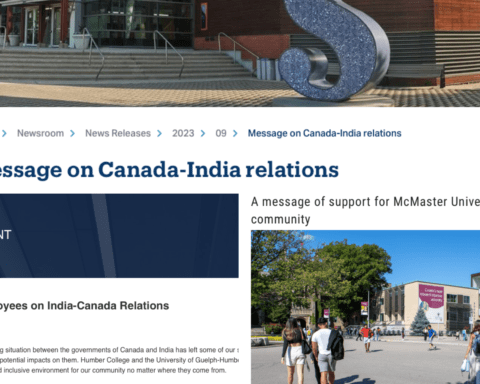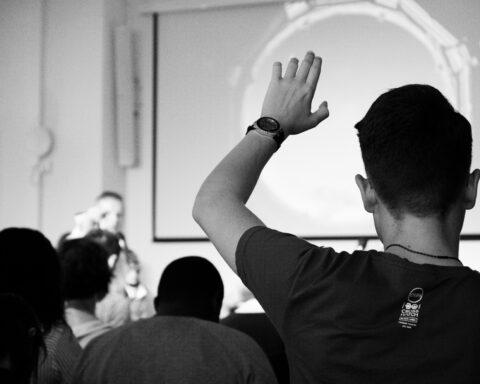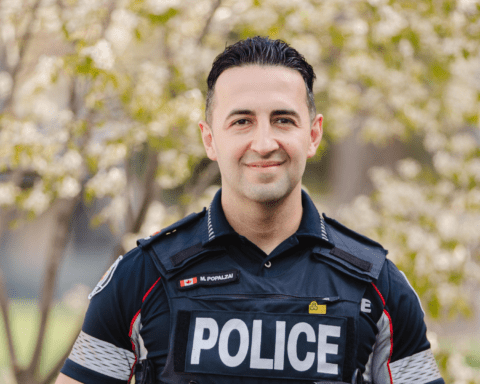Winnipeg is generally more tolerant today than it was 12 years ago.
That’s when I moved to the city, and at the time there was relatively low awareness of the contribution of newcomers to the city. Generally speaking, newcomers were associated with violence in the inner city, and significant barriers existed for them in a number of sectors. Over the years, there have been developments in the service sector though, and programs that address the needs of newcomers have been established.
In Winnipeg today, a lot of people seem to genuinely want to understand the cultures of newcomers and are very accommodating of difference. As a newcomer from a Muslim background, I have found most of the people I interact with are generally accepting of my cultural needs, both at work and in the community. Beyond that, there are a number of businesses I know that have English programs at their work places that provide ESL support to newcomers. This speaks to the recognition that people who work in these businesses also have a desire to improve their literacy.
Old Prejudices Die Hard
It is not all positive though. Issues with race prevail when it comes to employment – including the hiring practices of businesses and even some government institutions. Similarly in the education system, and even the service provision sector, biases prevail. Old prejudices die hard; even those who are trying to accommodate newcomers can get caught up in prejudices blindly.
In schools, newcomer students, particularly those of colour, are continuously discriminated against by their peers and often by their own teachers.
Perhaps, the epitome of racial profiling has been with the city’s police service. While the Winnipeg Police Service is quite receptive to community needs – the Force is led by a Black police chief committed to addressing issues of prejudice towards people of colour – there is still continued profiling of young, Black males among frontline officers.
In schools, newcomer students, particularly those of colour, are continuously discriminated against by their peers and often by their own teachers who humiliate them in front of other kids when they are unable to meet the expectations of the teacher. This is especially true for refugee youth, who have experienced interrupted schooling and as a result have difficulty in their learning here in Canada. Teachers do not go the extra mile to find resources for these students to be able to catch up to the other kids. As a result these students often drop out of school or are pushed through the system to graduation. I once came across a young man who graduated from high school and was admitted to college based on his high school credits, only for it to be later discovered that his reading and math skills were at a Grade 6 level.
Perceptions and Misconceptions
In certain areas of the city, there is less receptivity towards immigration or acceptance of people of colour. The recent changes in federal immigration policies, coupled with rhetoric from leaders, which labels refugees as bogus and receiving gold-plated medical care, only contributes to intolerance, particularly from those living in affluent neighbourhoods. When community leaders for example, perpetuate these biases and vitriol, the most affected are the people of colour, as they are the most visible and easily associated with refugees, regardless of their immigration status.
Newcomers are not generally informed or educated about the plight of the Aboriginal people, and pick up on existing stereotypes. Aboriginal people view newcomers as taking away jobs and housing from them. This results in resentment.
Lastly, there is a major mistrust and simmering conflict between the Aboriginal community and newcomers, regardless of their background. Newcomers are not generally informed or educated about the plight of the Aboriginal people, and pick up on existing stereotypes. Aboriginal people view newcomers as taking away jobs and housing from them. This results in resentment. And as a result there is growing tension between these two communities.
The recent Maclean’s article depicting Winnipeg as the most racist city in Canada has helped start conversations on racial prejudice against Aboriginal people. This has by extension opened the eyes of newcomers towards the existence of racial prejudice against Aboriginal people and the stereotyping of this community. Many people are also generally talking about the issue of racial discrimination and how this impacts on certain communities. With a new mayor and police chief who have shown a great interest in taking this issue head-on, there might be opportunities for confronting issues of racism and racial prejudice in different parts of the city. Confronting racism will, however, require the commitment of all Winnipeggers to accept the existence of new citizens and take bold personal actions to welcome them.
Abdikheir Ahmedhas extensive experience working with immigrant and refugee communities in Winnipeg’s inner city focusing mainly on settlement issues, gang and street crime prevention and refugee supports. He previously served as the Executive Director of the Immigrant and Refugee Community Organization of Manitoba (IRCOM) Inc. Abdi has a master’s degree in international peace and conflict resolution from the University of Queensland in Brisbane, Australia where he studied on a Rotary Peace Fellowship. He immigrated to Canada in 2003 where he joined the University of Winnipeg to study international development graduating in June 2006 as a student of high distinction.





